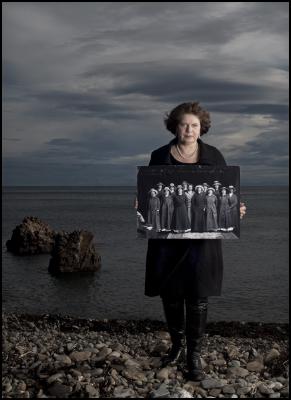First major commemoration of WW1 centenary
Portrait Gallery staging first major commemoration of First
World War
centenary

The New Zealand Portrait Gallery will stage the first major commemoration of the start of the First World War 100 years ago with a moving, colourful and varied exhibition opening next month.
Facing the Front: New Zealand's Enduring First World War will feature about 70 paintings, drawings, busts and other items illustrating the country's participation in what became known as "The Great War". The exhibition, at the gallery on Wellington's Queen's Wharf, will run from June 12 to August 24.
The first exhibit will be a 1500mm by 500mm cross of Flanders poppies that the Queen laid at the Wellington Cenotaph on January 11 1954 during the first visit to New Zealand by a reigning monarch.
Images of the war's main players, including Britain's King George V, Germany's Kaiser Wilhelm II and the Turkish leader Mustafa Kemal Ataturk,feature in the first part of the exhibition along with politicians, generals, Victoria Cross winners, scientists and businesspeople.
This section includes nursing pioneer Hester Maclean and health reformer Ettie Rout, who's New Zealand Volunteer Sisterhood introduced safe sex practices to Kiwi troops in Egypt. It also features conscientious objectors, including James K Baxter's father Archibald, who defied the nation's jingoistic fervour and refused to fight.
New Zealand, as a devoted member of the British Empire, enthusiastically sent more than 102,000 men and women to the war and the exhibition's curator Gavin McLean, senior historian at the Ministry for Culture and Heritage, says consequences linger today.
"Our views on the war are always changing," he says. "Every generation writes its own history, as more letters, diaries, photos, oral histories etc come to light, and the second part of the exhibition features people who have changed our view of World War 1."
These include official wartime and
contemporary historians and writers like
John A Lee,
Robin Hyde and Maurice Shadbolt, who wrote the play Once
on
Chunuk Bair, the Gallipoli peak where more than 850
New Zealand troops died.
Dr McLean says that by including living historians, war artists and memorial designers "it is our intention to explore how the war continues to exert an influence on New Zealanders and their sense of identity."
He admits that the ordinary soldier or sailor is under-represented in the exhibition, but it includes civilians, whose contribution is often undervalued.
"The authorities commissioned few portraits of
privates or seafarers, though families did, and their work
will be featured in exhibitions by Te Papa and others," he
says. "By its very nature, portraiture is biased, and it was
not the age of the
selfie."
ends


 Gordon Campbell: Papal Picks, And India As A Defence Ally
Gordon Campbell: Papal Picks, And India As A Defence Ally Te Pāti Māori: Te Pāti Māori Make Submission To Privileges Committee In Absentia
Te Pāti Māori: Te Pāti Māori Make Submission To Privileges Committee In Absentia PSA: PSA Forces Changes To Restructure Of Data & Digital And Pacific Health
PSA: PSA Forces Changes To Restructure Of Data & Digital And Pacific Health Waitangi Treaty Grounds: Anzac Day Commemorative Evening Service At The Waitangi Treaty Grounds
Waitangi Treaty Grounds: Anzac Day Commemorative Evening Service At The Waitangi Treaty Grounds Ministry For Culture And Heritage: New Zealand Flag Half-Masting To Mark The Passing And Funeral Of His Holiness Pope Francis
Ministry For Culture And Heritage: New Zealand Flag Half-Masting To Mark The Passing And Funeral Of His Holiness Pope Francis NZ Government: PM Sends Condolences On Passing Of Pope Francis
NZ Government: PM Sends Condolences On Passing Of Pope Francis NZDF: Battlefield Remains Unearthed By Wildfires In Gallipoli Covered Over By Kiwi Team
NZDF: Battlefield Remains Unearthed By Wildfires In Gallipoli Covered Over By Kiwi Team


